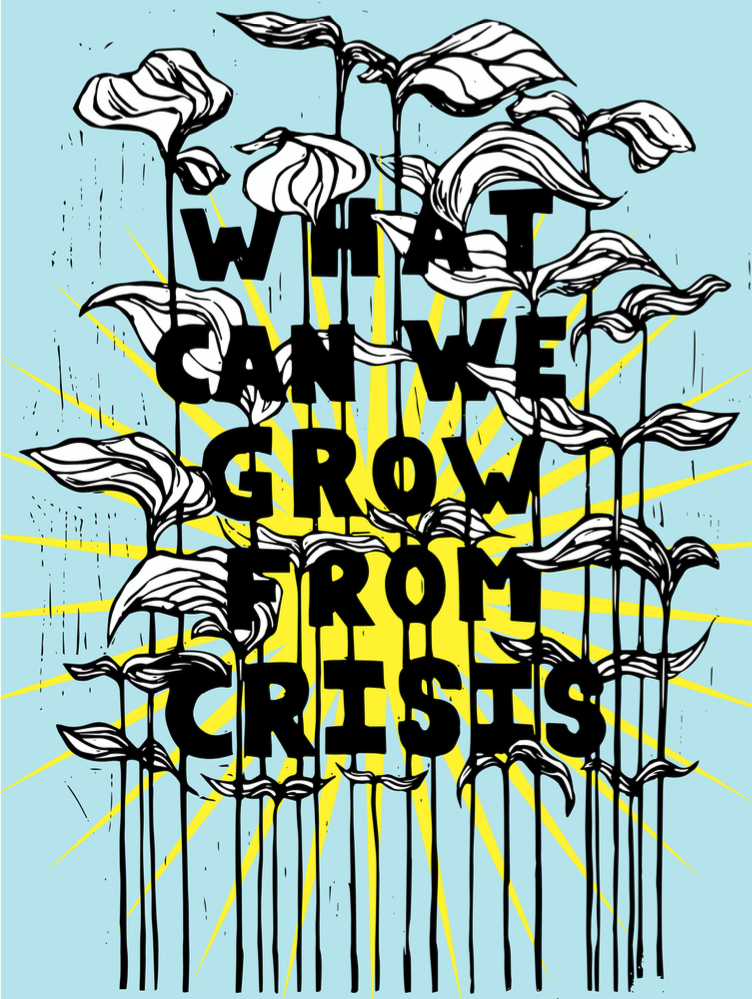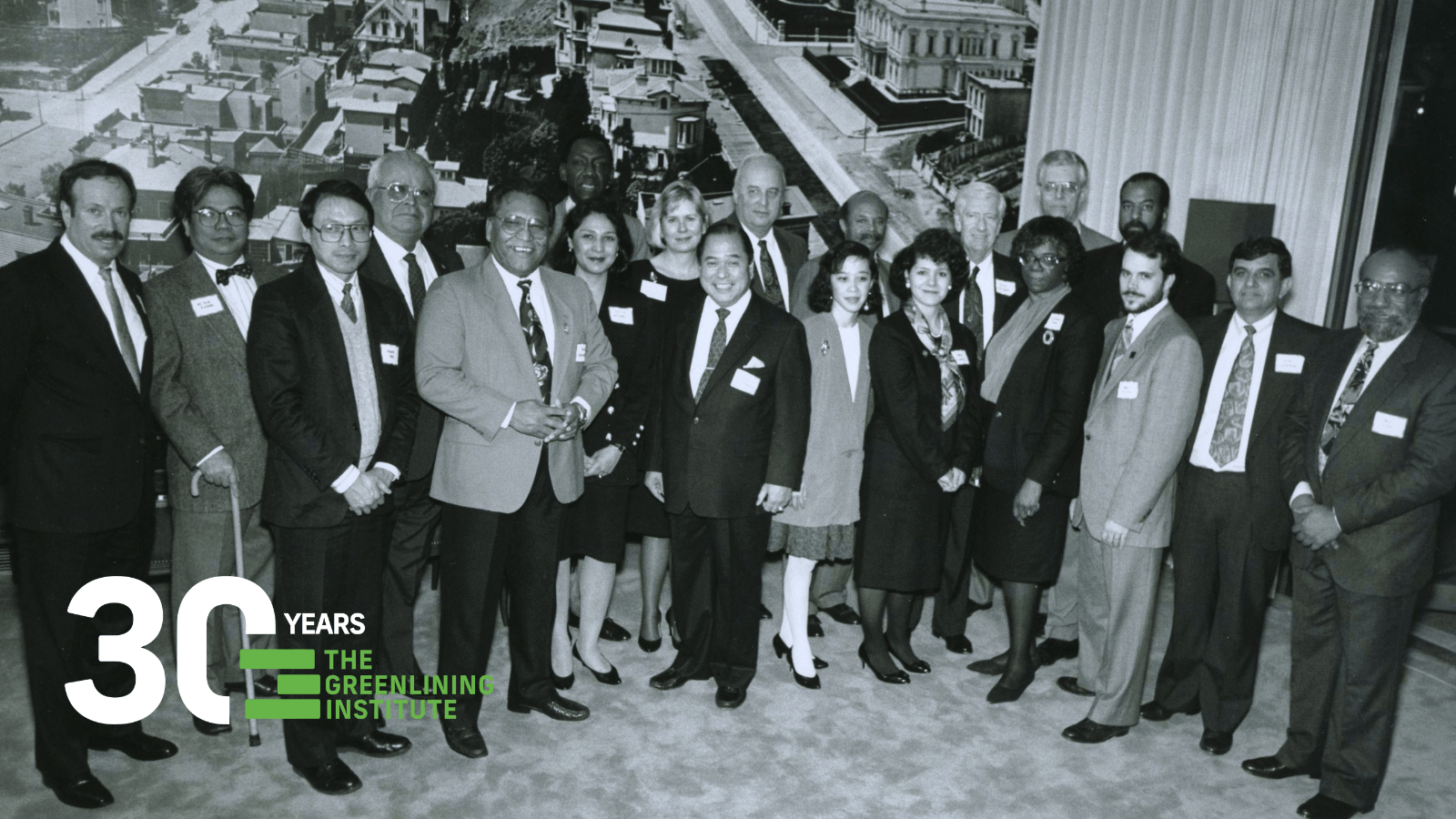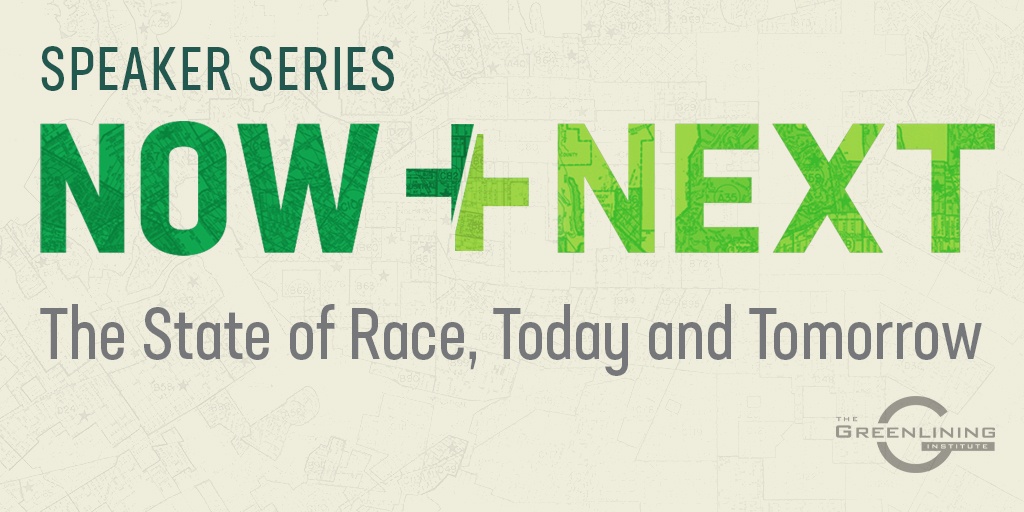Greenlining the Recovery and Long-Term Community Resilience
The ongoing global health crisis and economic collapse have revealed to the general public what racial justice advocates have known for a long time: our economic system is fundamentally and profoundly broken. To overcome the unequal impacts of COVID-19 and build true community resilience will require race-conscious responses to racialized problems.
Our economy runs on an engine of White supremacy and forced inequality, and COVID-19 has illuminated that in the most vicious way possible. Low-income people of color are the most vulnerable to the pandemic due to decades of residential housing segregation, lower access to quality healthcare or food, and other underlying factors. These communities are also overrepresented in undervalued but essential jobs with low wages, no teleworking option, and often a lack of critical worker protections such as paid sick leave or hazard pay. Even the CDC, a nonpartisan federal agency, is warning us about the racialized risks of the coronavirus. Yet official policy often pretends that solutions to problems can’t be race-conscious.
We need big, structural change now. The federal COVID-19 relief package was touted as a safety net for families and small businesses, but in reality it reinforced entrenched income inequality; thanks to a tax change discreetly included in the CARES Act, more than 80 percent of the benefit will go to those earning over $1 million. We need to focus on giving families real, immediate relief, but we also need to be working in parallel toward a future that addresses the root causes of racial disparities and income inequality. As racial justice advocates, we have a duty to reshape our economy into a system that radically meets the needs of the people who have suffered the most under our current paradigm, particularly people of color.
Our vision for a greenlined economy is one that is inclusive, regenerative, cooperative, non-exploitative, and democratic. Last month, my colleagues Debra Gore-Mann and Adam Briones shared their thoughts on the nuts and bolts of the COVID-19 stimulus package. In this post, we discuss how to structure efforts toward relief, recovery and community resilience with a long-term racial equity framework.

Courtesy: “What Can We Grow From” by Pete Railand
Federal and state recovery measures should follow Greenlining’s pillars of community investment, which we’ve written about in the past:
- Target COVID-19 relief to communities that have suffered from historical discrimination and disinvestment.
Recovery efforts should be race-conscious and acknowledge that not only is COVID-19 having the most severe impacts in formerly redlined communities, but that those neighborhoods often lack the financial resources, political power, and capacity to bounce back after a crisis like this one. - Prioritize multi-sectoral projects and recovery approaches.
The COVID-19 pandemic is not just a health crisis; it is also an economic crisis that is already having cascading impacts on our environment, technology, education, immigration, prison system, and more. The recovery needs to recognize the intersectional nature of these impacts and prioritize efforts that address multiple issues at once. - Ensure that benefits go directly to people and communities.
Recovery needs to help the people most impacted, not trickle down from the top. The Paycheck Protection Program failed at doing this, instead allowing large corporations to benefit from a program intended for small business relief. Rebuilding our economy will require more thoughtful and targeted community investment efforts that provide direct benefits to people. - Build community resilience and capacity through relief efforts.
We need to invest in approaches that help people stay resilient in the face of another pandemic or looming crisis like climate change. Approaches like a green recovery plan for California or The People’s Bailout will protect vulnerable communities during the current crisis, and ensure that they are prepared to withstand other disasters in the future. - Engage and empower community members at every stage of COVID-19 recovery.
The most resilient communities are the ones with the strongest social networks. Throughout this pandemic, grassroots mutual aid efforts for food, health, and financial support have emerged to fill the gaps that our current economic system has failed at addressing. For long-term community resilience, we need to actively redistribute power into the hands of marginalized people. Communities know what they need to survive and thrive, and recovery efforts should let them lead. - Create wealth-building opportunities as part of recovery measures.
Reshaping a new economy means giving more people more opportunities to participate in the system. The recovery should elevate and encourage new, race-conscious approaches that help people build wealth such as different ownership models, wealth-building options for renters, and financial products designed to increase access to economic opportunity for people of color.
The Greenlining Institute has “greenlined” industries for a long time, by pushing banks, agencies, and policymakers to think about racial equity when they invest in communities. COVID-19 has made it clear that we need to think bigger — we need to greenline the economy overall and build true community resilience. As my colleague Alvaro Sanchez put it, “If not now, when?” Reimagining our economic system post-pandemic isn’t opportunistic, it’s a necessity if we want to have a truly just, resilient, and equitable world.
The impacts of this crisis will reverberate for decades: a recent study by economists at UC Davis found that the economic effects of a pandemic will typically linger for about 40 years after the last victim dies, but we can’t wait that long. Forty years is more than enough time for climate change to destroy entire communities, or for multiple generations of a family to miss out on opportunities to build wealth. We need to radically reimagine our economy with racial equity, not white supremacy, at the foundation. We need to greenline the system.
Sonrisa Cooper is Greenlining’s Community Development Program Manager. Follow her on Twitter. To receive updates on our ongoing response to the Coronavirus pandemic, sign up for The Greenlining Institute’s newsletter.
Main Photo Courtesy of Mike Erskine, from Unsplash



